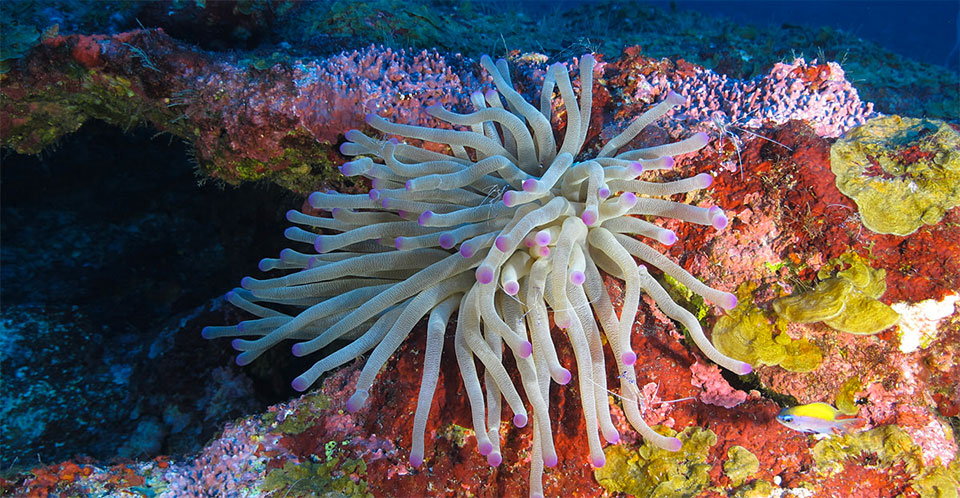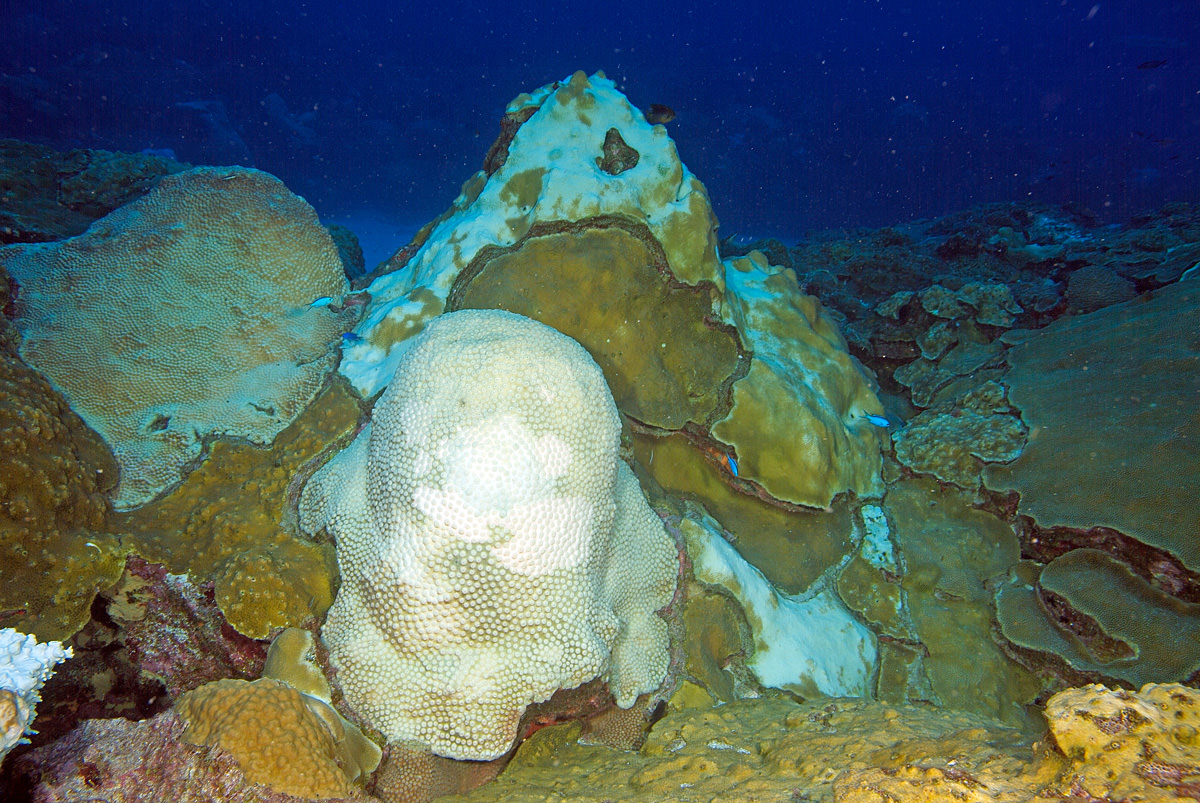Climate Change and Ocean Acidification
Flower Garden Banks

Why is it a concern?
Human-induced increases in greenhouse gas emissions are contributing to global-scale warming and are associated with acidification of the world’s oceans. For corals, warming events have the potential to cause or exacerbate harmful events, such as outbreaks of disease and coral bleaching, and may reduce growth or impair sexual reproduction.
Corals typically respond to excessive seawater warming and other stressors by “bleaching,” undergoing physiological changes that result in the loss of their algal symbionts. Historically, the corals within Flower Garden Banks National Marine Sanctuary (FGBNMS) have proven to be resilient following bleaching events.
However, in 2005 the worst bleaching event on record occurred, and approximately 45 percent of the coral colonies at FGBNMS were affected. Mortality was not high overall, but concerns exist over this apparently increasing threat. The coral bleaching during this event diminished below a depth of approximately 95 feet (29 meters), indicating that deeper regions of the reef are less susceptible to factors that cause coral bleaching. The reefs of FGBNMS suffered another significant bleaching event in 2010.
Mesophotic corals are found throughout the deeper areas of the sanctuary, as well as throughout the reefs and banks in the region. Little is known about how climate change and ocean acidification will impact these communities, and what the resulting impact will be on the larger ecosystem.
Overview of Research
| Project Name | PI and contacts | Links |
|---|---|---|
Climate change and Acropora |
||
Ocean Acidification |
Dr. Niall Slowey, Texas A&M University |
Project in development |
Ocean Acidification |
Dr. Xinping Hu, TAMUCC |
|
NCRMP - Ocean Acidification |
Derek Manzello, NOAA |
Science Needs and Questions
- What measures are available to managers to address or mitigate CO2 emissions?
- How are calcifying organisms affected by acidification?
- Which calcifying organisms are most severely affected by acidification?
- Can FGBNMS corals adapt to rising sea surface temperatures?
- Can FGBNMS coral growth keep pace with sea level rise?
- What is the current level of coral bleaching and how will it change as a result of climate change?
Education and Outreach Material
Office of National Marine Sanctuaries Climate Change Website
Reef Monitoring Lesson (636kb pdf)
A lesson using observation skills to examine changes over time in a reef habitat. Requires a series of actual reef monitoring images that can be downloaded from the Stetson Bank Monitoring Images web page
Coral Cores: Ocean Timelines (6MB pdf)
A lesson that explains how corals create their calcium carbonate skeletons in layers and what those layers can tell us. Includes x-ray images of actual coral cores taken from the sanctuary.

References
Gittings, S.R., M. Tartt, and K. Broughton. 2013. National Marine Sanctuary System Condition Report 2013. U.S. Department of Commerce, National Oceanic and Atmospheric Administration, Office of National Marine Sanctuaries, Silver Spring, MD. 33 pp.
ONMS (2008). Office of National Marine Sanctuaries. 2008. Flower Garden Banks
National Marine Sanctuary Condition Report 2008. U.S. Department of Commerce, National Oceanic and Atmospheric Administration, Office of National Marine Sanctuaries, Silver Spring, MD. 49 pp.
Precht, W. and R. Aronson. 2004. Climate flickers and range shifts of reef corals.
Precht, W. K. Deslarzes, E. Hickerson, G.P. Schmahl, J. Sinclair, and R. Aronson. Climate Change and the History of Acropora spp. at the Flower Garden Banks. 2009 MMS-ITM, New Orleans, LA.

